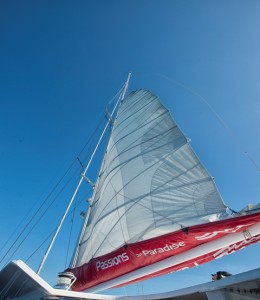Raise the jib! Hard to starboard! Batten down the hatches! Excited for a day out on the Great Barrier Reef, many visitors on board Passions of Paradise be having a multitude of first-time experiences: their first time scuba diving, their first time seeing a sea turtle, their first time swimming in the ocean… there are so many options. Many passengers will be also stepping on to their first proper sailing vessel, and will be seeing for the first time how a boat can glide effortlessly over the water, powered by the wind. Sailing has a rich history, and it also has an extensive vocabulary. To make you sound like a proper salty dog, we’ve listed some handy terms that can provide a helpful overview of sailing and boat basics so that you can talk just like the pros.
- Aft – The back of a ship. If something is located aft, it is at the back of the sailboat. The aft is also known as the stern.
- Bow – The front of the ship is called the bow. Knowing the location of the bow is important for defining two of the other most common sailing terms: port (left of the bow) and starboard (right of the bow).
- Port – Port is always the left-hand side of the boat when you are facing the bow. Because “right” and “left” can become confusing sailing terms when used out in the open waters, port is used to define the left-hand side of the boat as it relates to the bow, or front.
- Starboard – Starboard is always the right-hand side of the boat when you are facing the bow. Because “right” and “left” can become confusing sailing terms when used out in the open waters, starboard is used to define the right-hand side of the boat as it relates to the bow, or front.
- Leeward – Also known as lee, leeward is the direction opposite to the way the wind is currently blowing (windward).
- Windward – The direction in which the wind is currently blowing. Windward is the opposite of leeward (the opposite direction of the wind). Sailboats tend to move with the wind, making the windward direction an important sailing term to know.
- Boom – The boom is the horizontal pole which extends from the bottom of the mast. Adjusting the boom towards the direction of the wind is how the sailboat is able to harness wind power in order to move forward or backwards.
- Rudder – Located beneath the boat, the rudder is a flat piece of wood, fiberglass, or metal that is used to steer the ship. Larger sailboats control the rudder via a wheel, while smaller sailboats will have a steering mechanism directly aft.
- Tacking – The opposite of jibing, this basic sailing manoeuvre refers to turning the bow of the boat through the wind so that the wind changes from one side of the boat to the other side. The boom of a boat will always shift from one side to the other when performing a tack or a jibe.
- Jibing – The opposite of tacking, this basic sailing manoeuvre refers to turning the stern of the boat through the wind so that the wind changes from one side of the boat to the other side. The boom of a boat will always shift from one side to the other when performing a tack or a jibe. Jibing is a less common technique than tacking, since it involves turning a boat directly into the wind.
So now that you know some basic sailing terms, you may feel more at home on a sailing boat like Passions of Paradise. When you come on the boat, feel free to talk to our friendly staff, including the skipper, about any sailing or boat-related questions you may have. Or, you can just watch, as we make our way home; sit back, grab a drink, and enjoy the sailing!

